
Set of Unique Photos of the Rebbe’s Farbrengens
In honor of Gimmel Tammuz, CrownHeights.info and Lubavitch Archives present a set of photos from several photographers of the Rebbe’s Farbrengens in the 1980s.
In the 1970s the New York Times described a Farbrengen with the Lubavitcher Rebbe:
There would be a farbrengin (get-together) for his birthday, with about 1,500 of the male faithful jammed into the synagogue (women upstairs, looking on from behind smoked glass) at 770 Eastern Parkway in Brooklyn, to hear the Lubavitcher deliver one of his extraordinary marathon addresses.
As customary the rabbi would begin with a half-hour warm-up talk. As he speaks, many in the throng rock back and forth, or side to side.
Clad in black, they suggest vast collection of somber grandfather clocks, each keeping time in its, distinctive pendular way. Sometimes Whole lines of the crowded faithful sway together, like waves sweeping to the rabbi’s shore. Here and there a clock stands rapt and still.
When the rabbi finally pauses they swing into a joyous Hasidic hymn, often wordless. Here song is heard as the expression of the soul, and without words the soul is unconfined.
Slowly, the rabbi picks up the rhythm with his shoulders and head, and suddenly he is bouncing vigorously up and down in his chair to the music’s beat. His feet swing left and right under the white tablecloth that covers the table in front of him. The harder he bounces the louder his audience sings.
Slowly he eases himself back to a stationary position and the singing calms from thunderous unison to silence.
He resumes his discourse — each half-hour portion a separate homily or argument. Except on the Sabbath, his words (Yiddish interspersed with Hebrew) are carried by loudspeakers to those who have been unable to get into the synagogue, and by open telephone lines to a dozen Lubavitch centers round the world.
On the Sabbath, when the Orthodox will not use recording instruments, two or three followers who have extra ordinary memories listen carefully and then put together a verbatim record. The Lubavitch rabbi never uses notes and never hesitates, even during his six-hour talks.
Words and music are variations on themes that owe much to the teachings of the founder of Hasidism, the Baal Shem Toy — Master of the Good Name — an 18th-century mystic who taught pious joy in the performance of commandments. The Baal Sham Toy spread the word that a simple man who prayed sincerely was better than a Talmudic scholar whose heart was cold.
For mroe historic photos visit: www.facebook.com/LubavitchArchives.

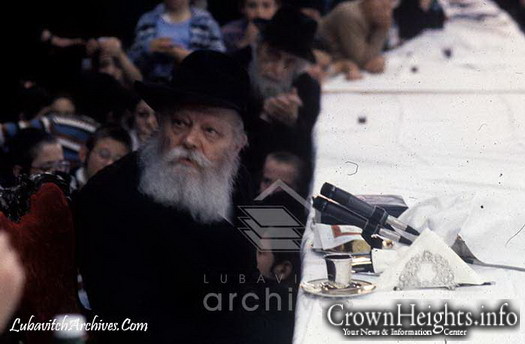
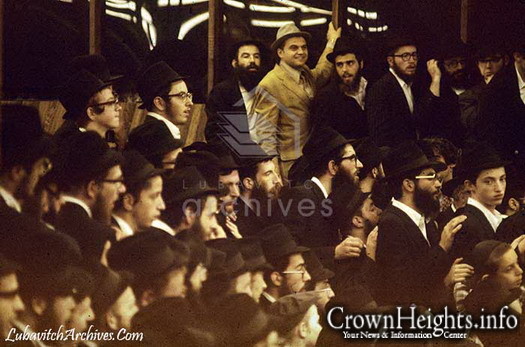
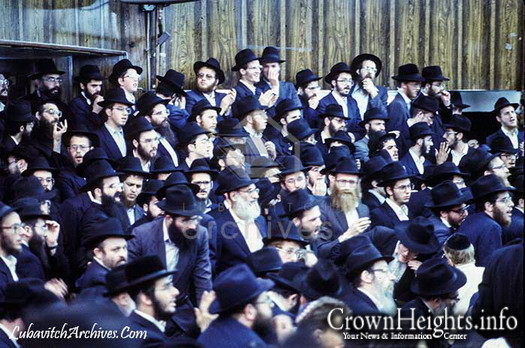

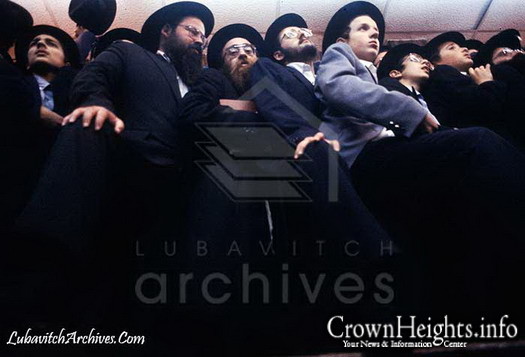
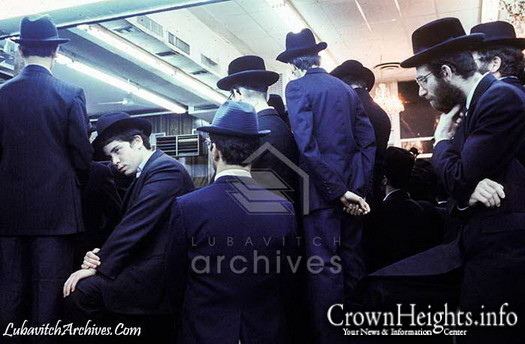
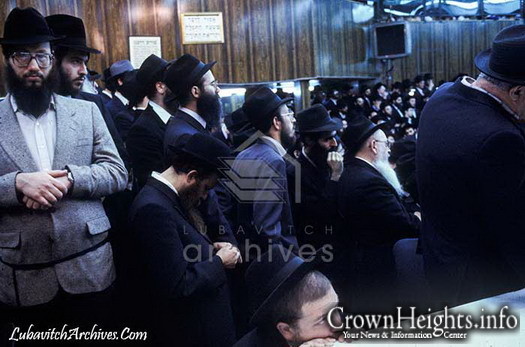
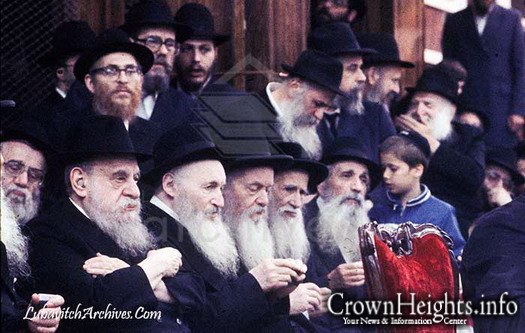














Stam
IMHO pic #6 is not by a REBBE farbrengen
great photos
thank you for sharing.